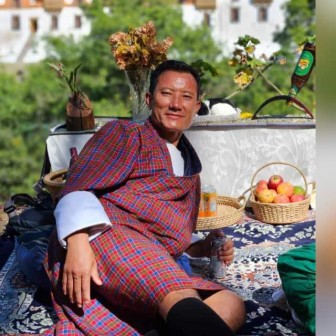



Yes it's now possible to explore Bhutan's culture, tradition, landscape and landmarks using helicopter. We can customise the trip as per your personal interest and requirement. When you travel by air, you will see what the Bhutanese builders could not have imagined at the time they crafted the many monasteries, villages and ruins that dot the landscape. Be sure to bring your camera!
The scenic tour begins with a low flight over Paro Valley. The area, with its fertile rice fields and the meandering Paro Chhu River that divides the valley in half, is an unparalleled sight to behold. The river is wide and blue, with flat green banks extending on either side, and sandbars often visible along the winding turquoise length areas.
We then pass over ancient rural villages, followed by some of Bhutan’s most famous and prominent sights, such as Paro Rinpung Dzong. This Buddhist monastery and fortress was built in the 15th century, later renovated in the 17th century, and is surrounded by greenery and an impressive cantilevered bridge below it. It currently houses the administrative and monastic body of Paro district.
Slightly above the ridge is the Ta Dzong (currently the National Museum), and just minutes later, we will swoop low over the famous Tiger’s Nest Monastery for a close-up. With golden roofs, white walls and red bands, it is a true marvel. Seeing the monastery from the sky is a breathtaking experience.
We then head further north towards Mount Jomolhari, still flying along the Paro Chhu River, and will soon pass over the ruins of Drugyel Dzong, built in 1649 and now rebuilt recently. Mouth Jomolhari, which stands at 7,320 metres / 24,000 + feet above sea level, is straddled between the autonomous region of Tibet and Bhutan. It is also one of the highest virgin peaks in the world. Climbing is banned, as Bhutanese believe that deities live on top of the mountain. The helicopter will then land at the Jomolhari basecamp, Jangothang, for a quick snack and selfie time.
If you are lucky, you will get a chance to see the herds of blue sheep along the way. Properly called Pseudois nayaur or bharal, these sheep are only found in the Himalayas, in the countries of India, Nepal, Bhutan, Tibet and Pakistan. Blue sheep cling to the cliff sides of steep mountains, males living separately from females, feeding on grass. They are a rare sight to behold.
From there, we will return to Paro, experiencing more of Bhutan’s unspoiled wilderness along the way.


